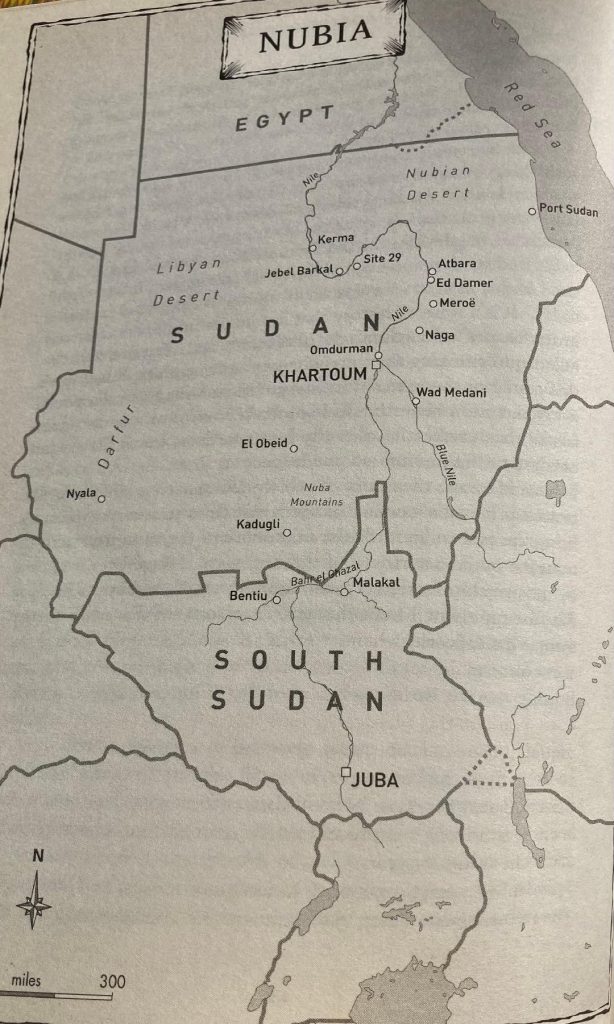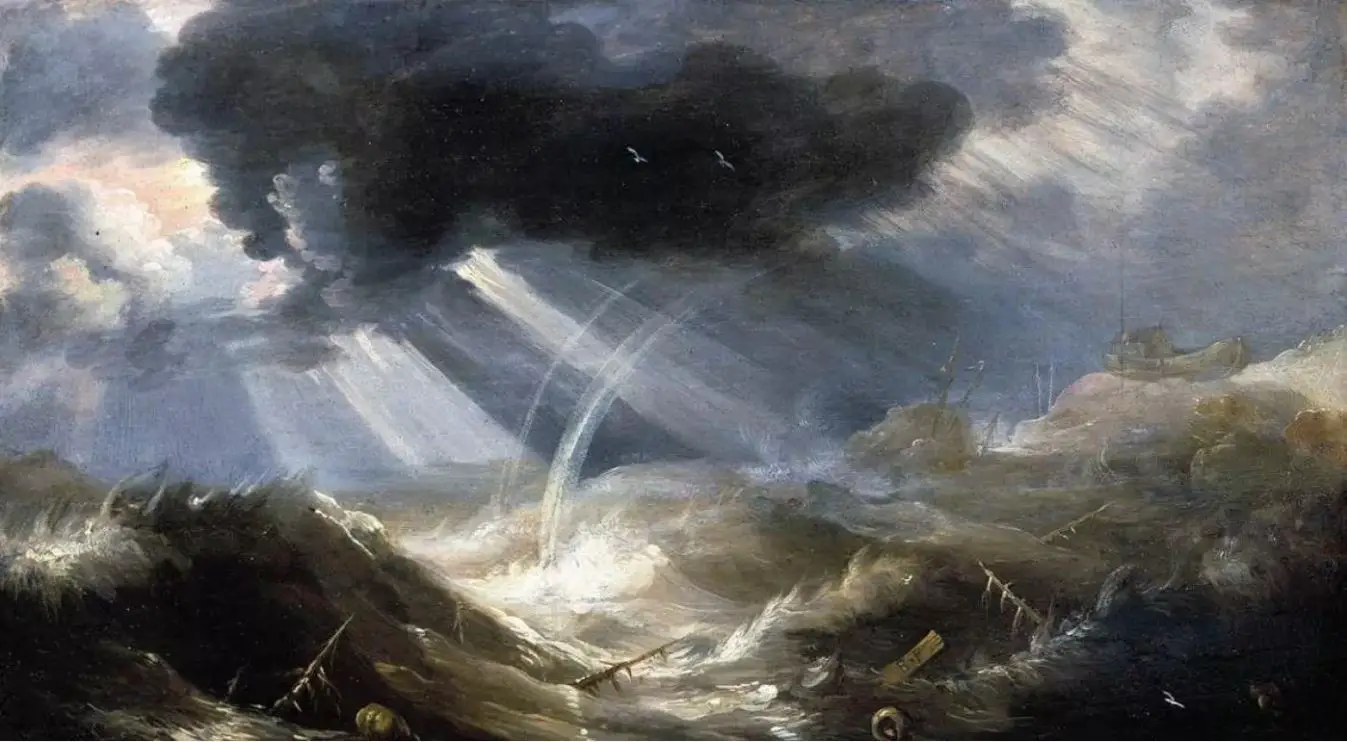 ou may recall the surprising origin of our common human history, that we revealed in our last article, when we also promised to continue our story here, after the departure some 19,000 years ago, from above the arctic circle in todays finland.
ou may recall the surprising origin of our common human history, that we revealed in our last article, when we also promised to continue our story here, after the departure some 19,000 years ago, from above the arctic circle in todays finland.
We left our Proto-Finnic-Sanskrit speaking people, 19,000 years ago, taking farewell of their fellow tribe, staying in Karelia, Finland, speaking there later, Proto-Finnic-Uralic, while their departing siblings, would end up speaking Proto-Sanskrit-European, already once they situated themselves in todays Lithuania, where still today, this spoken language, is completely understood by every Lithuanian.
We called it, with a tongue-in-cheek, our “tower-of-babel-moment”, but with no disrespect towards the biblical epic – and as you can see here a bit later – this religious epos, like many other epics, have had the truth steering at us right in our faces, if we only would have chosen, to look a bit closer.
Anyway, after Lithuania our Finnic people headed further south, to todays Ukraine and Georgia; and from there, a part of them west to the Basque region, that was the last stop north, along the Atlantic coast, before reaching the frozen North, they had themselves come from; and to Iran and Tibet at Mount Kailash where their ancestors would become 18,000 years ago, the Bon monks, still there today.
From Mount Kailash, down the two rivers of Saraswati and Ghaggar, they would travel next, meeting and interbreeding with the Dravidians, that had settled there around the same time arriving from Africa, as the Finnic immigrants had arrived themselves settling down above the Arctic Circle.
The First Vedic Civilization 18,000 to 13,000 years ago, they would together create and build a city, out on Seven natural Islands outside the outlets of Rivers Saraswati and Ghaggar, and their descendants there – as Plato, Aristotle and Soli of Syria, would later write, would become, the first Jewish tribes, with Noah as its leader.
The Antarctic Cold reversal climate change 14,500-13,000 years ago, there then alternated melting and freezing of the snow masses up in the Himalayas, causing a massive “biblical” flood and resulting earthquake, putting this island civilization, under water, that would be known to Plato as “Atlantis after The Atlas North Star” seen from above the Arctic Circle, and to Muslims in their Koran, as “The Land of Eden in India” and to Jews as “The Eden Paradise”.
Only the Bon Monks up on Mount Kailash – who had arrived 18,000 years ago from above the Arctic Circle, as Finnic Vedic people, would remain, and all people from this island, fleeing this huge disaster, would migrate to the only equal civilization, that had evolved in Aethiopia, after the original Exit of Homo Sapiens 60/50,000 years ago.
The oldest known evidence for truly anatomically modern humans (2017-18) are found at Jebel Irhoud, Morocco, and are dated to 300-360,000 years old, making them the oldest known remains categorized as “modern”.
And while the late start of seeking truthfully our African roots, has not yet confirmed that this Aethiopia, with a history of professional mining, already taking place 30,000 years ago – was an equal to The First Vedic Civilization around that same 5,000 year period.
18,000 to 13,000 years ago, it is more than plausible, that this civilization best known as Nubia – when the lush and green rainforests, were still there, until 10,000 years ago, would at least have been of a similar development 13,000 years ago, when our trio of Jewish, Vedic-Finnic and Dravidian, returned to its roots in Africa, where they had exited more than 45,000 years earlier.
When the rainforests started the change to a desert, as part of the 25,600 long precession of the equinoxes, and the wobbling of the planet since India resulted from being created 55 million years ago, causing a climate 24,000 year cycle, the sand quickly erased, or hid, what once had been the true first creator, of the Egypt of the pharaohs.

This ancient Nubian Civilization, was located in Northeast Africa, what today is within the political boundaries of Sudan. The land of the Nubians was referred to as Nubia, or the Kingdom of Cush or even AEthiopia consisting also of todays Libya and Sudan, (not to be confused with what is modern day Republic of Ethiopia).
Biblical sources trace the earliest ancestry of the Nubians to Noah, and later to Noah’s son Ham. Ham was the father of the greatest ever Nubian ruler Cush, who ruled from his capital city Kerma. The Genesis says, “The country Cush was named after the man Cush, the first son of Ham, son of Noah” – (Genesis 10:6). The existence of Cush’s reign is tentatively estimated at 13,000 years ago.
Here we remind you that both the epics, of the Illiad & Odyssey, as well as the Bible, refer often to Aethiopia.
King Salomon and Queen Sheba is well known, as is King Salomon’s mines, but that the true Ark of the Covenant, is claimed to be located there today, in a replica temple of the temple of Jerusalem, is less known, as is that Biblical Moses in old age, became the King of Kush.
The Nubian names Ham and Cush have lead some to conjecture that they might have its source also in the ancient Indian epic, the Ramayana.
The Ramayana is the story of the great ancient Indian God-King, Sri ‘Ram’, who is said to have ruled the world from the city of Ayodhya. Interestingly, Sri Ram had a son by the name ‘Kush’.
The Ramayana traces the lineage of Sri Ram to Manu, the first man on earth, much like how later the Nubian texts trace the lineage of Ham to Noah, the first man. Although Manu has also been connected to the name Adam.
Sri Ram had two sons, Kush and Lava. In Sanskrit, ‘Kush’ is translated as ‘grass’. It is said that ‘Kush’ was ‘created’ by Rishi Valmiki (also the author of Ramayana) from ‘grass’.
The name ‘Kush’ (कुश), Sanskrit for ‘grass’. What is interesting is that in ancient Indian texts, Africa was known as ‘Kusha-dwipa’ (कुश द्वीप), ‘the island of grasslands’.
In the Nubian texts, the name ‘Cush’ has not been deciphered. However, it has been suggested that ‘Cush’ might mean ‘dark skinned’.
Uncannily, the Nubian king, Cush had a grandson by the name ‘Ramaah’.
The capital city of the Sudanese Kingdom of Cush, was known as ‘Kerma’. The name ‘Kerma’ is probably a distortion of the Sanskrit ‘Karma’ (कर्म) meaning ‘action’. A close cognate ‘Kurma’ (कूर्म) means ‘turtle’ or ‘tortoise’. ‘Kurma’ is the second incarnation of Lord Vishnu in the Indian Puranic context.
Biblical sources say that the name of the father of ‘Cush’ was ‘Ham’. It is highly likely that these sources are inadvertently referring to Lord Rama. The name ‘Ham’ has never been deciphered. In Sanskrit, Rama (राम) means ‘charming’, ‘pleasing’, ‘beautiful or handsome’ and ‘delightful’ which summarizes the qualities of the God-King Rama.
In fact, it has also been argued that the name ‘Ham’ was originally spelled as ‘Rham’ and later with time the letter ‘H’ was dropped.
Another important Nubian city was ‘Meroe’. A close cognate of ‘Meroe is ‘Meru’ (मेरु) which translates as ‘Divine Mountain’ from Sanskrit. Meroe is the site of the 35 ancient pyramids, more than in Egypt, which were discovered in the 2010 in Sudan.
The link between Meroe and Meru is not that far-fetched considering that Tanzania too has a mountain by the name of Mt. Meru, the second highest peak after Mt. Kiliminjaro.
Up north from Sudan in Egypt lies the ancient archaeological site by the name ‘Nabta Playa’. Nabta Playa is an ancient stone observatory aligned to the Sun and constellation Orion.
Here we remind you that the total cosmos was accurately mapped out in the Rig Veda, already 26,000 years ago.
The entire sky can be mapped from Nabta Playa, and therefore the link with Sanskrit word ‘Nabha’ which means ‘sky’ is conclusively ascertained.
The Sudanese culture too has been greatly influenced by the Indian culture and much has already been written about it, that now starts to make sense.
As we unravel more we will take note of the fact that the genome of the Ancient Greeks is the closest to Aethiopians and other Sub-Saharan people, than to any Mediterranean peoples genomes.
More about that in our later articles, but if true wisdom evolved very early both in Africa and above the Arctic Circle – it’s easy to draw the conclusion, that then that same wisdom, evolved in Africa and Indus Valley, and after the flood, would there in Nubia spawn the wisdom based on which, the Mesopotamian Empire, the Persian Empire and then Greek Civilization appeared, followed by Alexander the Great with libraries in Alexandria and his attempt to conquer India.

Tom V. Wilen is a former globetrotting President & COO of publicly traded multi billion Jim Beam Co, with experience from more than 150 countries worldwide. After a 30 year career where often also delivering many speeches about diversity and global issues, at distinguished forums to expert audiences, he was asked to join CUNY Baruch College as Professor there teaching MBA students on global strategy and transnational management.
A lifetime devoted and inquisitive lecturer of culture, he commenced his true_history project twenty years ago to pursue in conjunction with his network of professionals, to reveal the true history of humankind, wherever it would take him.
His focus was on climate research, symbols and orally passed down stories by indigenous and other peoples stories who had not been given a fair attention, by the victors and powers who wrote our history, dismissing them as folklore or myth – until Triquet island outside BC in Canada, proved a 14,000 year old, and to-date the oldest presence in North America of indigenous people





